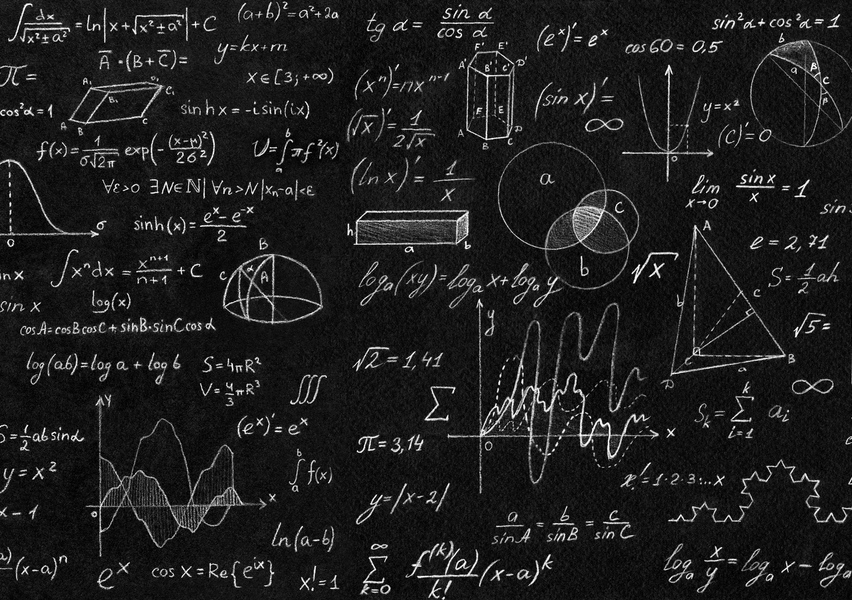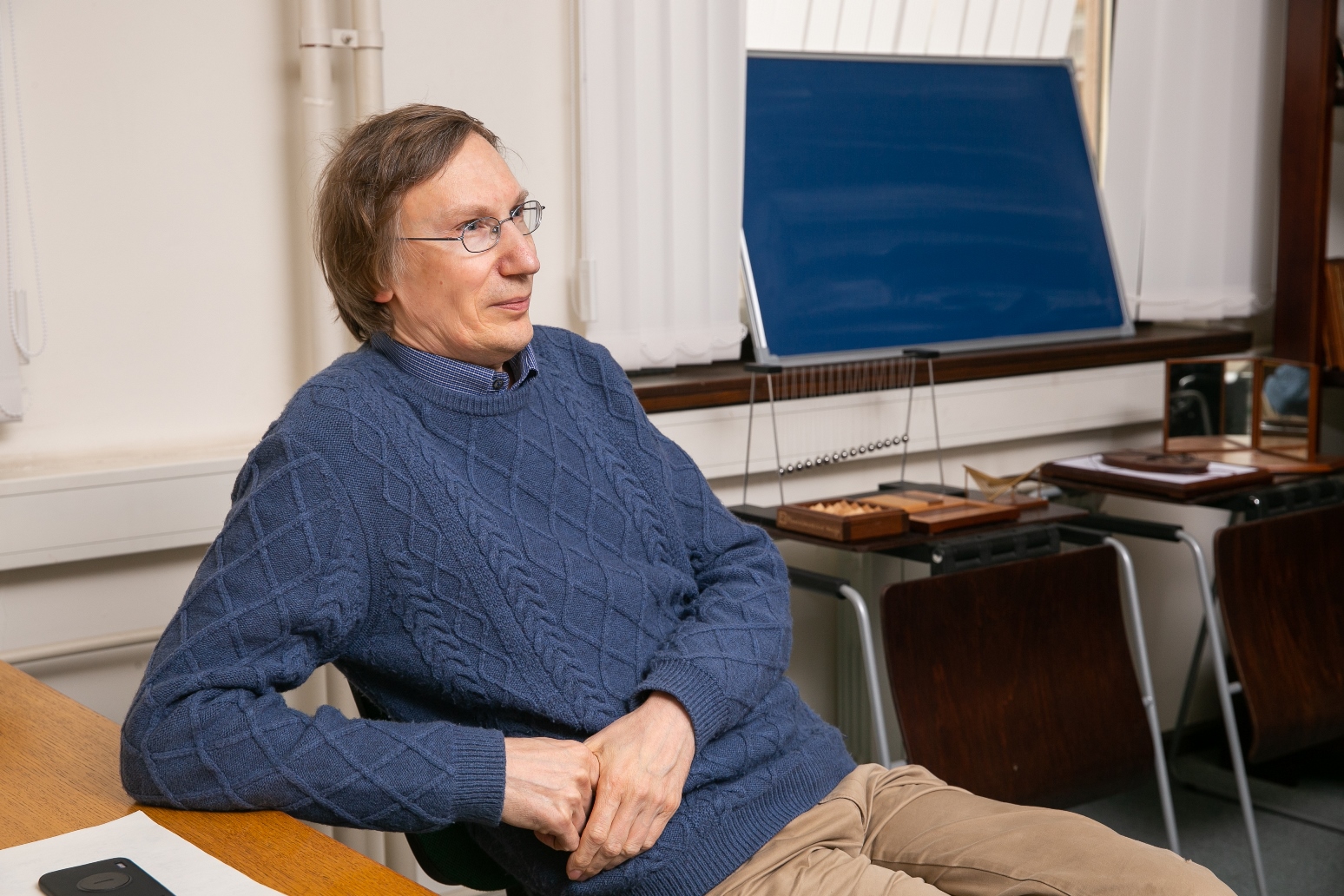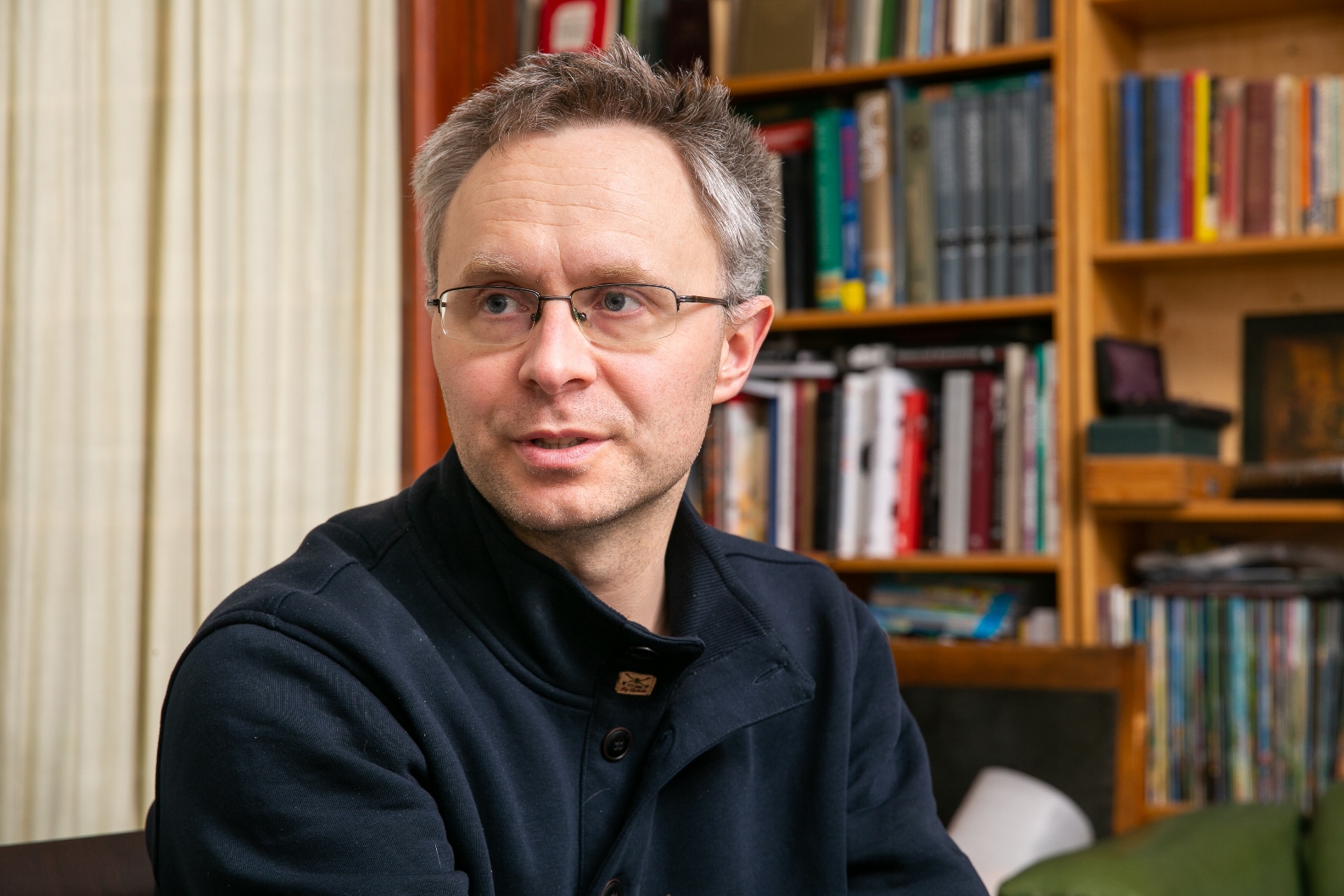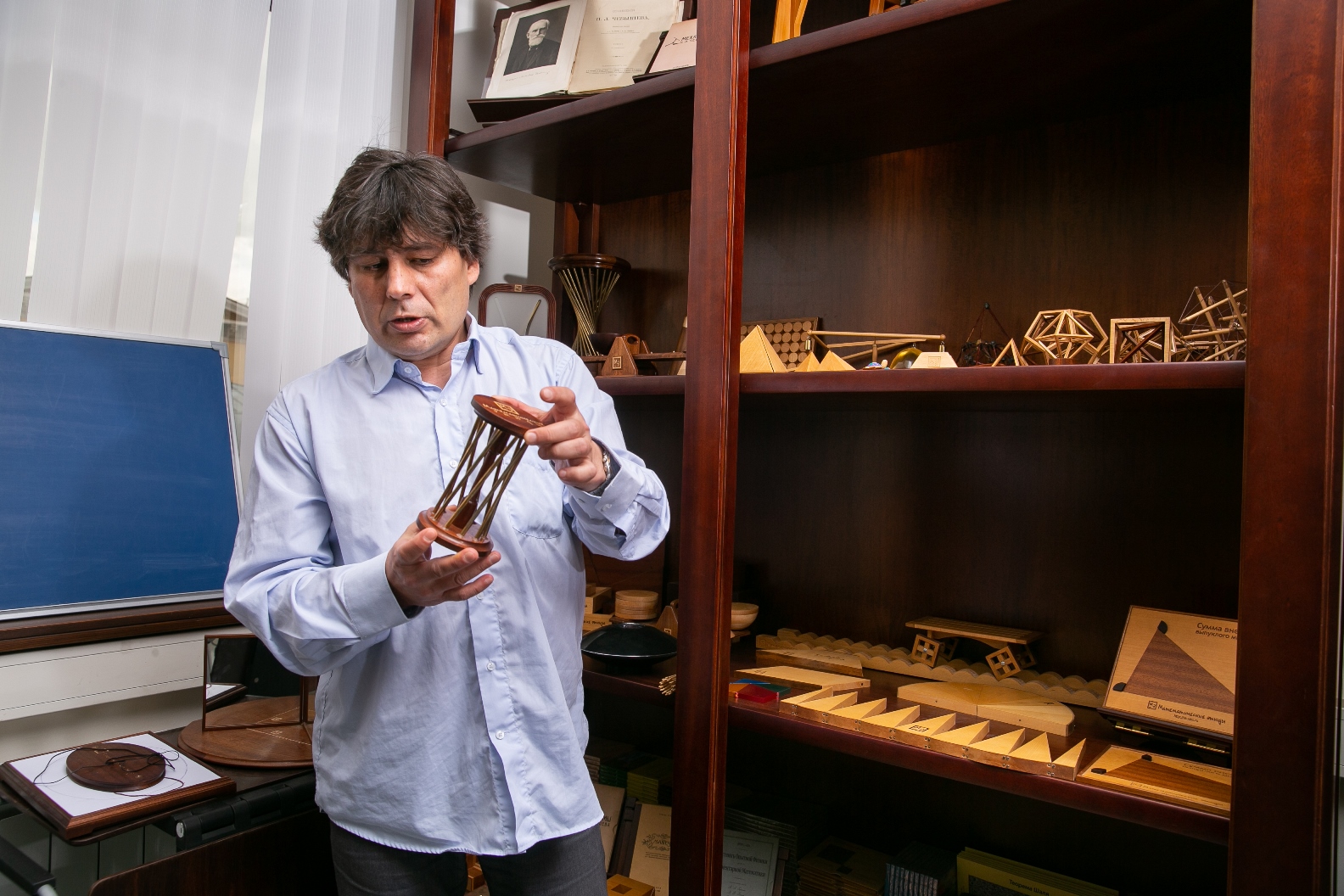‘A Good Thing about Mathematical Thinking Is That It Knocks Some Sense into Your Brain’

HSE University maintains active cooperation with the Academy of Science institutes, which open joint departments at the university and provide their best experts for teaching and research. HSE News Service talked to Deputy Directors of the RAS Steklov Mathematical Institute (MIRAS) — RAS member Lev Beklemishev and Sergey Gorchinskiy — about the development of mathematics in the modern world, career opportunities for graduates in mathematics, and the specifics of researchers’ work with students.
About Mathematics
What is the position of mathematics among other sciences today? Is it fair to say that it is not only a scientific field, but a kind of art?
Lev Beklemishev: Even within the professional community, there are different perspectives on this. I represent a particular field of mathematics, mathematical logics, in which aspects of the humanities are also important. However, the more traditional fields are mostly related to physics. Academician Vladimir Arnold believed that mathematics is a part of physics, one which doesn’t require any spending on experimental apparatus. Different fields of mathematics have different origins: geometry initially was a science about ground measuring, while probability theory was ‘mathematised’ only around the turn of the 20th century.

Speaking about some features of art, every science has it, including mathematics. Useful theorems are beautiful theorems, while ugly ones are most probably useless. Mathematicians often come to their research findings intuitively, and the simplistic image of a mathematician as a person whose main advantage is the ability to perform calculations quickly is far from reality. Of course, mathematicians live in the world of their ideas, but this doesn’t interfere with their ability to navigate reality.
Sergey Gorchinskiy: Prof. Beklemishev and I are involved in different fields of mathematics: I specialize in algebraic and arithmetic geometry, but I totally agree with him. Art is about ‘beautiful’ and ‘ugly’ categories, while science is about ‘proved or not proved’. Long ago, I decided to go into mathematics, because it is the only area of human activity that has objective truth. In physical or chemical experiments, many things depend on the conditions, so it is not as unambiguous as mathematics with its ‘two plus two equals four’ certainty.

Why is mathematics called ‘the queen of the sciences’?
LB: Because as early as in ancient times and the middle ages, scientific knowledge evolved as mathematical knowledge, and the language of mathematics was the language of science. And today, it is obvious to everyone that one cannot carry out research in any socially important field without the ability to argue in strict mathematical terms and to use at least some mathematical apparatus.
And irrespectively of formulas, a good thing about mathematical thinking is that it, so to say, knocks some sense into your brain, teaches you to think logically.
SG: I’ll continue the allegory: there are people who have had some sense knocked into their brain with mathematics, and there are those who simply haven’t had good teachers.
How wide is the range of mathematical studies today? Is it possible that scholars working in a certain area of mathematics do not understand what their colleagues are doing in another field of this science?
LB: Unfortunately, this is true. But there are researchers of a universal kind, whose interests cover maybe not all mathematics, but a very wide range, such as Andrey Kolmogorov or Vladimir Arnold. They represent the older generation, and there are fewer and fewer of them.
In the early 20th century, mathematics was continually expanding and branching, while since 1970s and 80s, merging has been the major trend. Those years saw the evolution of new applications of mathematics in physics, algebraic geometry and other areas that deal with different mathematics fields. This is still the dominant trend today.
About Cooperation with HSE University
Why do you think it is necessary for MIRAS to cooperate with universities?
For us, universities are mostly a source of staff, and we believe that the best students, graduates and young researchers should come to us. Staff are essential for mathematical research. Traditionally, most of our employees have been graduates of the MSU Faculty of Mechanics and Mathematics, and many forms of cooperation have been focused on this institution. The MSU FMM still remains our main source of new staff. But when a new, modern Faculty of Mathematics appeared at HSE University, and strong high school graduates started to go there, who then went on to became strong students, we couldn’t ignore it.
How is the cooperation between MIRAS and HSE University organized?
It’s all very natural. Our staff are closely involved in the life of the Faculty of Mathematics: we teach and carry out research, participate in its development and the discussion of various issues. Never in my life have I seen such a democratic academic council as at this faculty. At their sessions, everyone is equal, no matter the positions and degrees, and questions of human resources and workload distribution always cause energetic debate.
The Faculty of Mathematics includes a Joint Department with MIRAS, which is chaired by RAS member Viktor Vasiliev. But the department in this case is a notional concept. The faculty has no departments in the traditional understanding, when a small department team determines its own courses and barely interacts with other departments. The Faculty of Mathematics operates in a different way: all the teachers communicate with each other, participate in joint activities and are not split into specialization groups.
Students of the HSE Faculty of Mathematics make up a considerable share of those who study at MIRAS Research and Education Centre. This year, I am supervising a thesis by one HSE doctoral student, four theses by fourth-year students, and several term papers by junior students.
SG: We cooperate not only with the HSE Faculty of Mathematics but with other HSE departments as well. I personally do not have a teaching position (which doesn’t mean that I don’t have students and doctoral students), but I’m a researcher at the International Laboratory for Mirror Symmetry and Automorphic Forms. A few years ago, I also worked at the Laboratory of Algebraic Geometry and Its Applications. Our MIRAS colleagues also work at these laboratories part-time.
The launch of the Laboratory of Algebraic Geometry and Its Applications was very beneficial for us: we immediately started organizing joint conferences, which has turned out to be very convenient. They mostly take place in the MIRAS building, while participants from other cities and countries stay at an HSE hotel on Vavilova street, which is close to the Institute. Another important factor has been the opportunity to attract student interns to the laboratory and pay them for their work.
What can you say about HSE University students?
LB: When they do mathematics, their eyes sparkle, and it is always a pleasure to teach such students.
About Work and Salaries
What do mathematicians do in today’s Russia and how do they make their living? What academic career options are possible and preferable?
LB: The ideal career for those who want to specialise in theoretical mathematics is academic research. You can calmly do what you love at an academic institute and sometimes, teach. If a mathematician does absolutely no teaching, it is undoubtedly bad for them.
The start of a mathematician’s career is their thesis defence. For some time before the defence, they are in a certain environment, and they already understand what kind of environment it is, what institute has it, what research is done there, and who they want to work with. Today, there is no shortage of jobs for such people in Moscow. There is MIRAS, the Institute for Information Transmission Problems (intersection of mathematics and other sciences), as well as physics institutes, where mathematicians are also in demand, the Institute of Theoretical Physics in Chernogolovka and the RAS Institute of Physics, where mathematics is rather an applied field.
Another option is for those who want to work with school students, for example developing Olympiads. This is well-respected work and those who do it are often strong mathematicians themselves. They understand what real mathematics is, but put their effort into something else.
And of course, there is the traditional trajectory, to teach at a university. A contemporary university teacher must combine the role of a teacher who can explain complicated things to students and a researcher who works independently. Academic publications are among the key requirements for university teachers today.
Unfortunately, teachers are often overloaded with their teaching duties. With the number of class hours that are common for many universities, it is impossible to carry out research productively.
SG: There also other career opportunities, beyond teaching and research, and about 90% of graduates pursue these opportunities. This is mostly IT, and the most popular profession for professional mathematicians is working as a programmer. The other sphere that includes a lot of mathematics is banking, and the third is insurance. There are many examples of people who are professionally involved in financial mathematics, trade on the stock markets, create their companies and hire mathematicians.
Do mathematicians often pursue careers abroad?
LB: Yes, they do, to continue their education and work in academia, since the international market of such jobs with good salaries is bigger than the domestic one. But there are opposite examples, when holders of a PhD degree, post-docs come back to Russia. I worked in different countries for long periods myself, and my longest stay was in Utrecht, the Netherlands, where I had a permanent position, but came back to Russia 15 years ago.
About the Steklov Mathematical Institute
Could you tell us more about MIRAS?
The history of MIRAS dates back to 1921. Today it is the country’s best and most prestigious mathematical institute. Its glory is built on its scholars: portraits of our renowned predecessors are in the gallery on the ninth floor. Our library, in addition to its mathematics books, contains a lot of fascinating archive materials. It has a bookshelf that used to belong to Pafnuty Chebyshev, a great Russian mathematician.
We not only carry out research, but teach at Moscow’s best universities, as well as at our MIRAS Research and Education Centre. In the evenings, we also offer free special courses and workshops for students from any universities in different fields of mathematics. If a student takes exams (which is optional) we inform their university about it, and they get the associated credits. For students, this gives them additional courses in contemporary fields of mathematics by people who deal with it professionally, and for us, it is important that young people get to know MIRAS and get used to its atmosphere.
The institute has a Laboratory of mathematics popularization and propaganda chaired by Nikolay Andreev. MIRAS team consists of 120 scholars, including over 30 members of the Russian Academy of Sciences. About one-third are young researchers.

Are there HSE University graduates among your full-time employees?
Not yet, because the HSE Faculty of Mathematics only opened in 2007, and its first graduates are only now starting to defend their doctoral theses. But many of them also work with us part-time, on grants or on temporary contracts, and we consider them as our employees as well.
Lev D. Beklemishev
Professor, Joint department with the Steklov Institute of Mathematics (RAS)
Sergey Gorchinskiy
Research Fellow, International Laboratory for Mirror Symmetry and Automorphic Forms
See also:
HSE University Wins Seven Medals at International Mathematics Competition for University Students
HSE students were among the winners of the International Mathematics Competition for University Students (IMC), which was held in August in Bulgaria. The medallists are students of the HSE Faculty of Computer Science (FCS) programme in Applied Mathematics and Information Science and the Faculty of Mathematics programme in Mathematics.
‘Our Result Was Recognised Not Only Within the Project Defence but Also on International Scale’
This year, the European AI Conference (ECAI 2025) accepted an article titled ‘Multi-Agent Path Finding for Large Agents is Intractable’ by Artem Agafonov, a second-year student of the Applied Mathematics and Information Science Bachelor’s programme at HSE University’s Faculty of Computer Science. The work was co-authored by Konstantin Yakovlev, Head of the Joint Department with Intelligent Technologies of System Analysis and Management at the Federal Research Centre ‘Informatics and Management’ of the RAS and Associate Professor at the Faculty of Applied Sciences. In the interview, Artem Agafonov explained how he came up with the idea for the article and how he was able to present it at an A-level conference.
'Today, Human Existence Without Mathematics Is Difficult; Tomorrow, It Will Be Simply Impossible'
Mathematicians around the world share a common language and continue to collaborate despite the challenges of recent years. The hub of mathematical networking has been shifting to China, where scientists from various countries meet at conferences and other academic events. Partnerships with leading Chinese universities offer promising opportunities to strengthen existing ties and forge new ones. In this interview with the HSE News Service, Valery Gritsenko, Head of the HSE International Laboratory for Mirror Symmetry and Automorphic Forms, discusses this and other topics, including what AI is and why the state should engage with mathematicians.
'Our Goal Is Not to Determine Which Version Is Correct but to Explore the Variability'
The International Linguistic Convergence Laboratory at the HSE Faculty of Humanities studies the processes of convergence among languages spoken in regions with mixed, multiethnic populations. Research conducted by linguists at HSE University contributes to understanding the history of language development and explores how languages are perceived and used in multilingual environments. George Moroz, head of the laboratory, shares more details in an interview with the HSE News Service.
HSE Scores Best Results among Russian Universities at International Olympiad in Uzbekistan
At the Third Al-Khorezmi International Mathematical Olympiad (AKHIMO), held at Urgench State University in Uzbekistan, students from HSE University's Faculty of Computer Science scored best results among participants from Russian universities. The olympiad also featured contestants from Brazil, the USA, China, India, South Korea, Malaysia, Japan, Vietnam, Serbia, Kyrgyzstan, Kazakhstan, Tajikistan, Turkey, Turkmenistan, and Uzbekistan.
‘It’s Thrilling to Have an Opportunity to Discuss Your Scientific Ideas with Interested People’
The International Laboratory of Dynamical Systems and Applications at HSE University–Nizhny Novgorod conducts in-depth theoretical and applied research, including the study of ocean waves, solar corona reconnections, volcanic phenomena, and ship stability. The lab’s researchers, who have received more than 20 significant research grants over the past five years, actively cooperate with Russian and international colleagues from China, Spain, the USA, the UK, Brazil, and other countries. Prof. Olga Pochinka spoke to the HSE News Service about the laboratory’s work.
Russian Scientists Assess Dangers of Internal Waves During Underwater Volcanic Eruptions
Mathematicians at HSE University in Nizhny Novgorod and the A.V. Gaponov-Grekhov Institute of Applied Physics of the Russian Academy of Sciences studied internal waves generated in the ocean after the explosive eruption of an underwater volcano. The researchers calculated how the waves vary depending on ocean depth and the radius of the explosion source. It turns out that the strongest wave in the first group does not arrive immediately, but after a significant delay. This data can help predict the consequences of eruptions and enable advance preparation for potential threats. The article has been published in Natural Hazards. The research was carried out with support from the Russian Science Foundation (link in Russian).
'The Six Handshakes Rule Applies to Social Media'
Ivan Samoylenko specialises in graph theory; in his third year of university, he developed an idea that later became the foundation of a highly cited academic article. In this interview with the HSE Young Scientists project, he speaks about the Watts-Strogatz small-world model, being a performer in the Bolshoi Children's Choir, and making the choice between science and industry.
‘HSE Is a Very Good Place: Intelligent Students, a Strong Teaching Staff’
Since March 2025, the HSE Faculty of Mathematics has welcomed a leading Russian mathematician, Doctor of Physical and Mathematical Sciences, Honorary Professor at the University of Edinburgh, National Professor of China, and recipient of the Lyapunov Prize—Sergey Kuksin. In an interview with the HSE News Service, he spoke about the role of the individual in mathematics, KAM theory, and why analysis is so relevant today.
Scientists Disprove Bunkbed Conjecture
Mathematicians from Russia, including two HSE graduates, have disproven a well-known mathematical conjecture that, despite lacking solid proof, had been considered valid for 40 years. The ‘Bunkbed Conjecture’ belongs to percolation theory—a branch of mathematics that studies the formation of connected structures in independent environments.


